Home theater projectors have stolen the thunder from big-screen televisions and for good reasons. Go above 65 inches and TVs get disproportionately heavier and pricier.
But, you can easily get a massive screen size of 100-150 inches with a home theater projector. The best part is that the massive screen won't break your back or your bank account.
When it comes to commercial cinematic-grade viewing experience, televisions cannot hold a candle to home projectors.
In fact, with a short throw projector, you won't even have to worry about space constraints when setting up your very own home cinema.
But, what exactly is a short throw projector? Actually, what's projector throw distance, and why and how does it matter?
What is projector throw distance?

Throw distance refers to the actual horizontal distance from the lens of the projector to the screen. This is the distance that is needed for the projection unit to project video images onto the screen in a way that fills up the entire screen space.
Because it involves both the distance between the projection unit and the screen as well as the width of the screen, it is expressed as a ratio.
So when checking the specifications of your projector, you will often see the term throw ratio with numbers listed next to it. For instance, you may find something that looks like this:
Exhibit A 2.0/ 2.0:1
For this throw ratio, it means that for every foot of image width, you would need 2 feet of projector distance between the projector and the screen.
If you're considering having a 100" screen (actual horizontal width and not a diagonal width), you would need to place your projector within approximately 16 feet from your projector screen.
Exhibit B 1.5/1.5:1
For a projector throw ratio of 1.5:1, you would need approximately 12 ft. of projector-to-screen distance for a 100" screen.
WEMAX Nova

Using WEMAX Nova's throw ratio of 0.233:1, you would only need around 5.5 inches of projection distance for an 80-inch screen, 9.1 inches for a 100-inch screen, 13 inches for a 120-inch screen, and 19.3 inches for a 150-inch screen.
Why is WEMAX Nova's throw ratio so low? It's because, unlike the earlier examples, this WEMAX projector is an ultra short throw projector.
WEMAX Dice, WEMAX Go, and WEMAX Go Advanced
WEMAX Dice, WEMAX Go, and WEMAX Go Advanced have a throw ratio of 1.2:1 which means that you would only need about 9.6 ft of projection distance for a 100-inch screen.
Now, the thing to understand here is that the throw distance influences more than just the placement of the projector.
Once you have figured out how much space you would need between the screen and projector lens, you will also need to understand how other factors such as the distance of the screen from the seating and the light fixtures would influence this equation, etc., which we will discuss further in this article.
Types of projectors according to throw distance

Depending on the throw distance alone, projectors can be placed into three categories:
1. Long throw projector
Typically, long throw projectors require the maximum distance between the projection unit and the screen with a throw ratio of more than 1.0. This means that you would need at least 8 to 10 feet of space to get a screen size of 100-120 in. with these projectors.
Because of the space requirement and the fact that these projectors have to be mounted on the ceiling, you certainly don't have the option to physically move the unit around at will. So, they frequently come with zoom lenses.
2. Short throw projector
Short throw projectors have a throw ratio range of 0.4 to 1. So, to get a screen size of 100 inches (around 80 inches of horizontal screen width), you will need 32-80 in. or approximately 3 to 7 ft. Given the space requirement, these projectors can be ceiling mounted or placed on a coffee table in the middle of the room.
READ MORE: Short Throw vs Long Throw Projector: Which Is Better?
3. Ultra short throw projector
Ultra-short throw projectors have the shortest lens-to-screen distance with a throw ratio of less than 0.4. Generally, most ultra-short throw projectors offer a throw ratio of 0.25. So, to get a horizontal screen width of 80 inches, you would need a mere 20 in. between the screen and the unit.
How to calculate projector throw distance in different rooms

The throw ratio is often expressed as a float/decimal value such as 1.2 or 1.0 or a ratio such as 1.2:1 or 1.0:1. Manufacturers arrive at this value by using the following equation:
TR = D/W
Where: TR= Throw ratio, D= Distance between the projector lens and the screen, and W= horizontal width of the screen.
Now, you could just as easily use this formula to calculate the distance from the projector to the screen.
Projector Throw Distance Formula
D= TR x W
Consider the example of a projector with a throw ratio of 1.0 and a screen of 100 inches (diagonal) with an aspect ratio of 16:9, which would have a horizontal width of approximately 86 inches. In this case, the distance would look like this:
D= 1x86
So, D= 86 inches or 7.2 feet.
If you have a unit with a throw ratio of 1.2, your distance would be (D= 1.2x86) 103.2 inches or approximately 8.6 feet.
If your projector has a throw ratio of 0.6, your distance would be (D=0.6x86) 51.6 inches or 4.3 feet.
Throw distance examples for different kinds of rooms (with calculations)

* Note: Diagonal width of the screen is used to calculate the distance between the screen and the seating. The horizontal width of the screen is used to calculate the projector throw distance
1. Small Apartments and Condos
Typically, the average living room size in a small apartment or condo would be 12x12 while the master bedroom would have an area of 10x12 or 10x10.
Assume that in this room the couch is placed at the far end of the room away from the screen and takes up about 2-3 feet of space. This leaves you with a distance of 9-10 feet between the screen and the seating.
Let's go with the rule of thumb that your seats need to be at a minimum distance of 2x the screen size. You have 9 ft. of distance. So, your screen size should be 9/2= 4.5 ft. or 54-60 inches (diagonal). A 60-inch screen (aspect ratio of 16:9) has a horizontal width of 48-50 inches.
- For a projector that has a throw ratio of 1.0, you would need (D= 1.0x50 inches) 50 inches/approximately 4.3 feet of distance between the lens and the screen.
- For a projector that has an aspect ratio of 0.4, that would be a distance of (D= 0.4x50) 20 inches or 1 ft. 8 inches. So, you could actually increase the screen size a bit to 80 inches, particularly if you don't mind taking seats close to the screen at the movie theater.
- For an 80-inch screen, you would need to have a distance of (D= 1.0x64) 64 inches or approximately 5.5 feet if you are using a standard/long throw projector and a distance of (D= 0.4x64) 16 inches or a bit over 1 foot if you are using a short throw projector.
2. Residential Living Rooms
A medium-sized living room in a two-storied-three bedroom home is usually 16x20 feet while a large-sized living room is about 22x28 feet.
Because you will no doubt have other décor items and functional areas in this space, surely you won't be able to devote the entire room to the home theater setup.
If possible, set up the screen and the projector along the two walls that are farthest from each other. So, in a medium-sized living area, set up the screen and seating along its 20 feet length, and in a large-sized living room along its 28 feet length.
If you work under the assumption that the seating can be placed 3 quarters of the way along the length, you get a workable space of approximately 13 ft. in a medium-sized living area and about 19 ft. in a large-sized living room.
Frequently, this formula is used to calculate the optimal viewing distance from the screen to the seating—Diagonal width of the screen/0.84. If this is how you want to do things, you will end up with a distance of 119 inches for a screen of 100 inches. That's a viewing distance of approximately 10 feet.
So, for your medium-sized living room, you can easily go with a screen size of 120 inches and opt for a 150-inch screen for your large-sized living room.
This is what the throw distance would look like for all 3 screen sizes if you were to consider the throw ratio of a long throw, short throw, and ultra-short throw projector.
- 100-inch screen (diagonal):Long throw projector, the distance needed (D=1.0x80) is 80 inches/6 feet 8 inches; short throw projector, the distance needed (D= 0.6x80) is 48 inches or 4 feet; and for ultra short throw projector, the distance needed (D= 0.25x80) is 20 inches or a bit over 1 foot 8 inches.
- 120-inch screen (diagonal):Long throw projector, the distance needed (D=1.0x96) is 96 inches/8 feet, short throw projector, the distance needed (D= 0.6x96) is 57.6 inches or about 5 feet, and for ultra-short throw projector, the distance needed (D= 0.25x96) is 245 inches or 2 feet.
- 150-inch screen (diagonal):Long throw projector, the distance needed (D=1.0x120) is 120 inches/10 feet, short throw projector, the distance needed (D= 0.6x120) is 72 inches or 6 feet, and for an ultra short throw projector, the distance needed (D= 0.25x120) is 30 inches or 2.5 feet.
3. Dedicated Home Theaters

Generally, the dimensions of a dedicated media room are 10x14 (small), 12x16 (medium), and 14x20 (large).
Even if you have a small room but since it's a dedicated space, chances are that you have already made arrangements to deal with the ambient light and don't have any other functional purpose for the space.
So, if the seating can be placed along one wall and the screen on the opposite side by using the formulas above, this would be your screen size and throw distance.
For the small-sized room available space would be 10-12 feet, hence you could go with a screen size of 120 inches. This would give you the throw distance of:
- Long throw projector:96 inches/8 feet
- Short throw projector:Distance needed 57.6 inches/5 feet
- Ultra-short throw projector: 24 inches/ 2 feet.
For a medium-sized room, you will have a usable space of 13-14 feet. So, you could go with a screen size of 150 inches, which requires a projector throw distance of:
- Long throw projector: 120 inches/10 feet
- Short throw projector: 72 inches/6 feet
- Ultra-short throw projector: 30 inches/2.5 feet.
For a large-sized room, you would have a usable area of 17 feet, so you could even go with a screen size of 200 inches. This would need a projector throw distance of:
- Long throw projector:D= 1.0 x 160 inches= 160 inches/10 feet
- Short throw projector:D= 0.4 x 160 inches= 64 inches/5 feet 4 inches
- Ultra-short throw projector:D= 0.25 x 160 inches= 40 inches/3 feet 4 inches
Additional things to consider

If you know how to calculate the projector throw, you'll know exactly how much distance you'll need to maintain between the screen and the projector lens to get optimal performance from your projector. But, you will also need to account for other factors such as:
1. Ideal projector placement
The projector can be ceiling mounted in the center of the room if it's a long-throw unit. It can be placed on a table/tripod if it is a short throw or ultra-short throw projector. In both cases, the placement of the unit will have to be in the center of the room.
So, you will need to consider how the windows will impact the ambient light in the room. Also, you will have to factor in the space you need in front of the seats to move about without getting in the path of the light beam.
2. Screen size
As discussed earlier, you can divide the diagonal width of the screen by 0.84 to get the viewing distance for a particular screen size or simply choose to go with 2x the screen width (horizontal).
You get the option of using a zoom feature with many long-throw projectors. However, you will need to physically move the unit towards or away from the screen in case of short and ultra-short throw projectors.
For example, an ultra-short throw projector like the WEMAX Nova, which has a throw ratio of 0.233, will get you a screen size of 80 inches if placed 5.5 inches from the screen. But you could go up to a screen size of 150 inches if the unit is placed 19.3 inches from the screen.
READ MORE: How To Choose The Right Screen Size for Your Home Projector
3. Calibration and alignment
If for some reason, the projector cannot be placed such that it is aligned with the center of the screen or if it has to be tilted at an angle to fill up the screen space, you will need keystone correction.
While most projectors have this feature, only a few high-end products like the WEMAX Nova offer 8-point keystone correction. This means that you could place the projector close to the wall adjacent to the screen and you'd still get the expected image size and quality thanks to vertical and horizontal keystone correction.
4. Room lighting
If you have a light fixture that is in the path of the light beam, you will have to keep it switched off or you will need to opt for a short/ultra-short throw projector. Also, lights that are placed right above the screen or behind it can pose a problem.
5. Type of projector screen
If you don't a lot of control over ambient lighting as is usually the case when the home theater projector is set up in a multi-purpose living/recreational area, it's best to go with an ambient light-rejecting screen. But, if you have a dedicated media room, a high-quality fabric screen will be good enough.
6. Sound system

Last but not least, you will also need to consider the placement of the additional speakers if any. The norm is to place them on the side of the screen to create the effect of the sound emanating from the screen.
But, in the case of rear projection, the speakers can also be placed behind the screen. However, in this case, you will need an acoustic transparent screen.
Having said that, all WEMAX projectors come with powerful built-in speakers, so, you won't need a separate sound system if you don’t have your own soundbar or surround sound. WEMAX Dice and WEMAX Nova have built-in Dolby Audio for the maximum audio experience.
Wrapping It Up
Understanding how to calculate projector throw will help you to set up your home theater system in a way that gets the maximum performance from the projection unit.
If you are working with a standard-shaped room (square or rectangular), start by choosing the image/screen size and then calculating the projector throw distance needed to get the desired output.
But, if you are working in a non-standard-shaped room, start by deciding where you'd like to have the seats placed. Then, calculate the available distance from the screen to the seats which will allow you to pick the right screen size. Then, go ahead and calculate the throw distance needed to generate the image size.
If all that number crunching is too much for you, go ahead and use an online projector throw distance calculator. Once you have these figures in place, you'll know exactly what you will need to set up the projector, not to mention that the installation itself will get easier.
That said, if you need a high-performance ultra-short throw projector, the right screen to go with it, and a tripod for its installation, WEMAX has you covered on all fronts
A leading manufacturer of top-of-the-line LED, laser, and portable projectors, WEMAX also offers all types of accessories that you will need to set up your home theater system to perfection.
Related Blogs from WEMAX
How Are Laser Projectors Different From Normal Projectors?
Is A 100-inch Projector Screen Right for Your Home?
Lights, Camera, Budget: How To Create A Budget-Friendly Home Cinema
Be the first to know the latest updates, tips, how-tos, exclusive deals, and discounts from WEMAX. Sign up for our newsletter today!


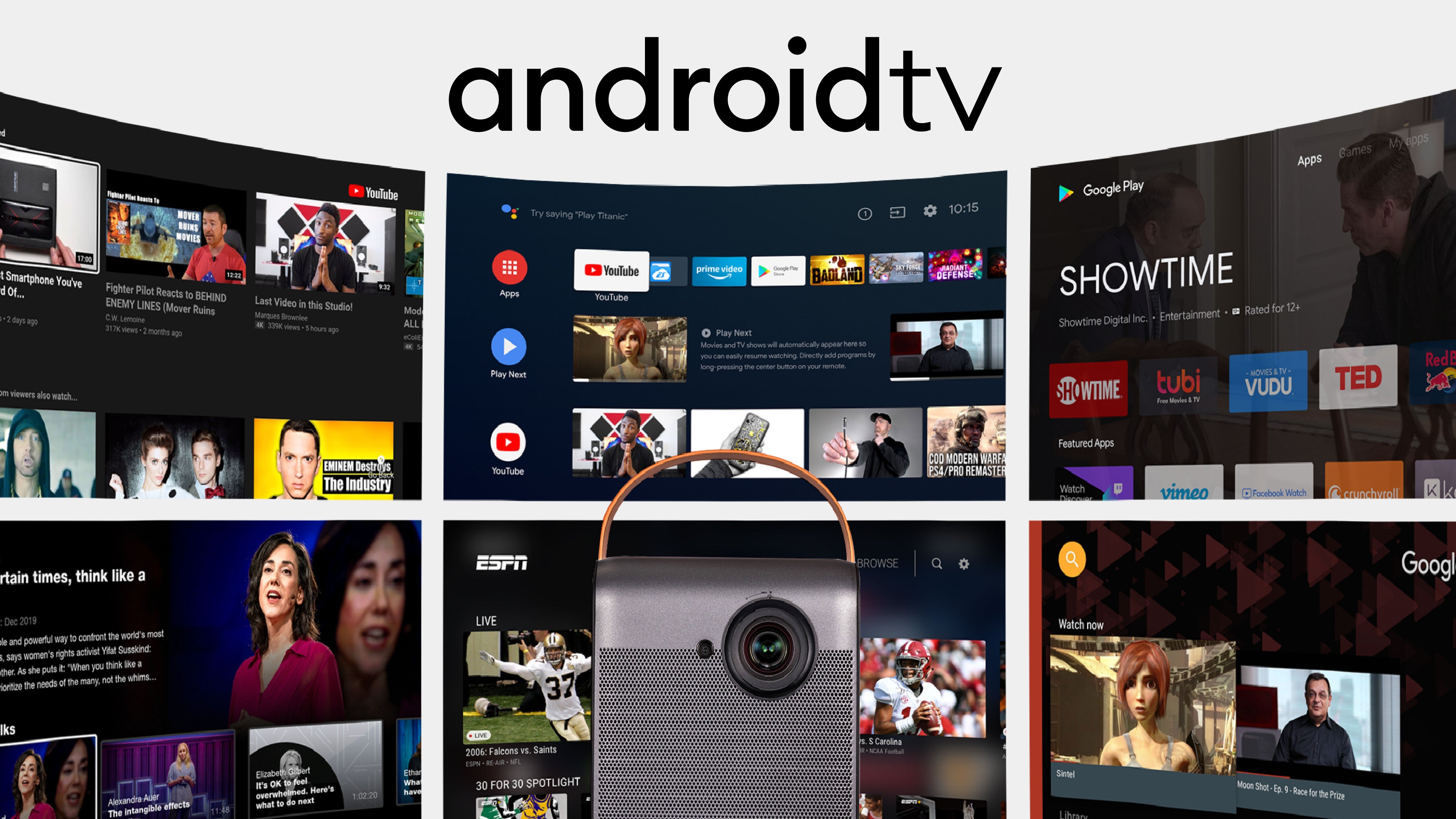
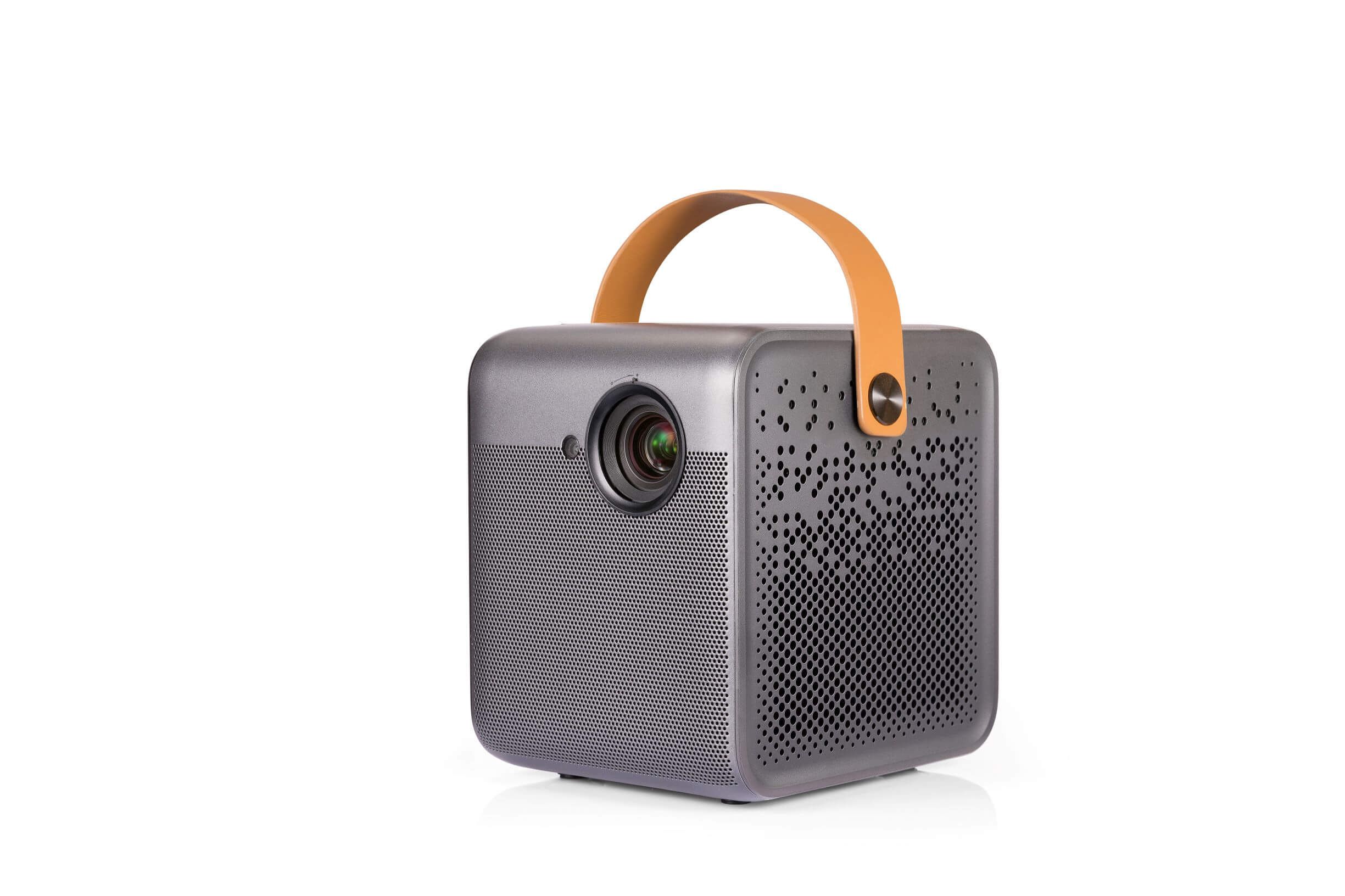
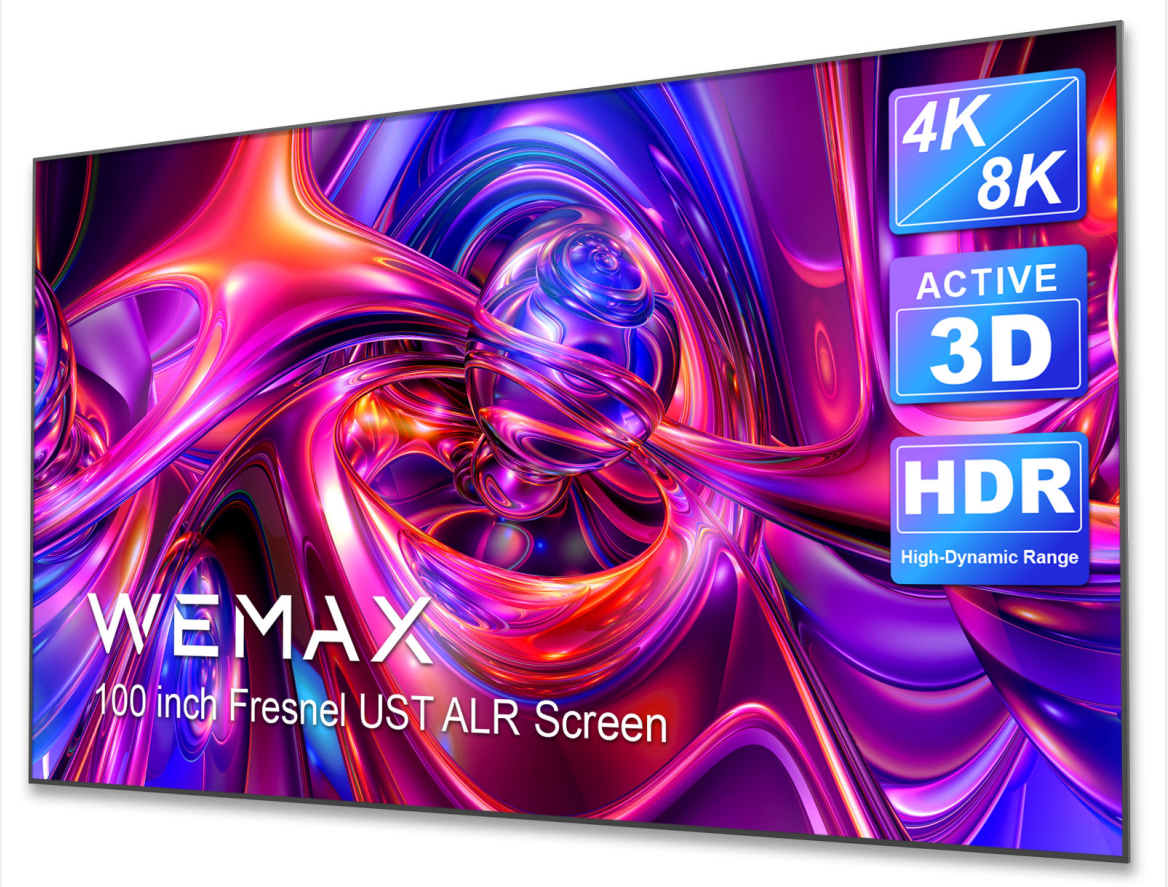
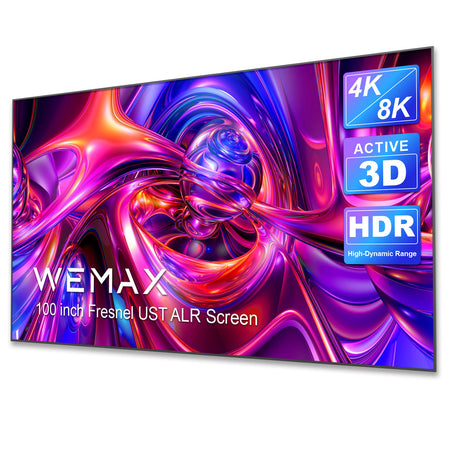
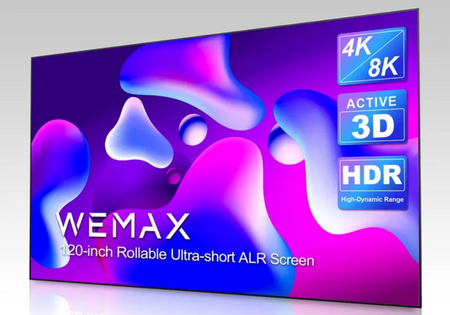
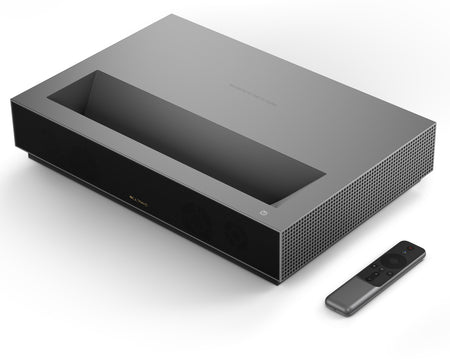
Comments (0)
Back to Tips and Tricks